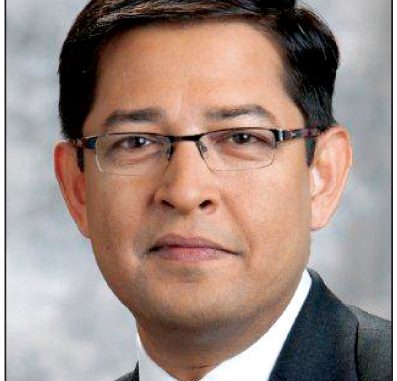
Global solar industry player First Solar sees a significant market opportunity in India, both as a developer as well as an equipment supplier, in view of the government’s target of achieving 100 GW of solar capacity by 2022. Excerpts from a recent interview with Sujoy Ghosh, country head, First Solar, India…
How has First Solar’s journey been so far in the Indian solar industry?
First Solar commenced operations in India in 2011-12, selling thin-film modules to utility-scale solar power developers. In 2013-14, the company expanded into solar power project development. In March 2016, the cumulative shipment of its cadmium telluride (CdTe) thin-film modules in India reached 1 GW, making it the first thin-film module manufacturer to achieve this goal. This demonstrates the company’s leadership in the Indian solar photovoltaic (PV) market. India represents a strategic market opportunity for First Solar owing to factors such as demand for solar energy, which is unsubsidised and driven by fundamental economic activity, a transparent and open market mechanism, and higher energy yield demonstrated by our CdTe modules vis-à-vis polycrystalline silicon modules.
What were the key business highlights for the company in 2015-16?
We maintained our position as the market share leader in India, as per a BRIDGE TO INDIA report. We also launched our Series 4 module technology in India. This technology offers 16 per cent efficiency, lower land use vis-à-vis polysilicon modules, and an energy yield advantage of 5-9 per cent over polysilicon modules in hot and humid conditions, owing to its superior temperature coefficient and optimal response to spectral shift caused by moisture in the atmosphere.
What are the company’s ongoing projects as a developer?
We have completed development works on 200 MW of our projects in the pipe-line, which have contracted power purchase agreements (PPAs) in Andhra Pradesh and Telengana. Of this, 70 MW alternate current (AC) has been commissioned. The remaining projects are under construction or at various stages of completion. We have expanded our project pipeline in Karnataka, securing 60 MW (AC) of projects under the Karnataka State Taluka level scheme.
How has the company’s financial performance been in the past two to three years?
Our 2015 financial results reported revenues of $3.6 billion, an earning per share of $5, and new order bookings of over 3.4 GW. First Solar has the strongest balance sheet in the solar industry today with net cash of $2 billion (most of our competitors have negative net cash positions). In 2015, we achieved a record cell efficiency of 21.5 per cent and module efficiency of 18.6 per cent, surpassing polycrystalline silicon cell and module record efficiencies for the first time. A strong and sustainable balance sheet coupled with a technology that demonstrates a higher head room for performance as opposed to polysilicon PV modules makes us a long-term partner for utility-scale solar power developers.
What is your view on the solar policy and regulatory environment? What are the key issues?
The policy and regulatory mechanism defined by the central government is aimed at enabling a larger demand for solar energy in the overall mix. However, since power is a concurrent subject, the state regulatory and policy environment needs to be in sync with the centre’s vision. Some states have converged with the central policy, while others are still working on it. Some of the larger issues that need central-state collaboration are distribution reforms to improve the financial condition of state-owned discoms, implementation of green corridors, and enforcement of renewable purchase obligations. Of these, distribution reforms are the most critical and need active engagement of all stakeholders.
What are the company’s key concerns and how does it plan to address these?
We would urge the government to provide longer-term visibility to demand as opposed to the current practice of auctions with a 12-15 month timeline. While we would like the auction process to continue as it brings in transparency in allocations, building and financing large capacity projects in 12 months is not optimal. We need a gap of at least 18-24 month between the signing of the PPA and the actual commercial operation date to execute the project while ensuring quality and compliance.
What is your outlook for the solar equipment market? What will be the company’s role in it?
Equipment manufacturers are expected to witness high volumes, but with the energy tariffs that developers are bidding, there is a high degree of commoditisation across the value chain. Therefore, profitable growth will remain a challenge and only players with scale and technology that can offer a competitive life cycle cost of ownership will be able to sustain themselves. We aim to retain our market leadership in India and we believe our thin-film modules can help make developers competitive in this market.
